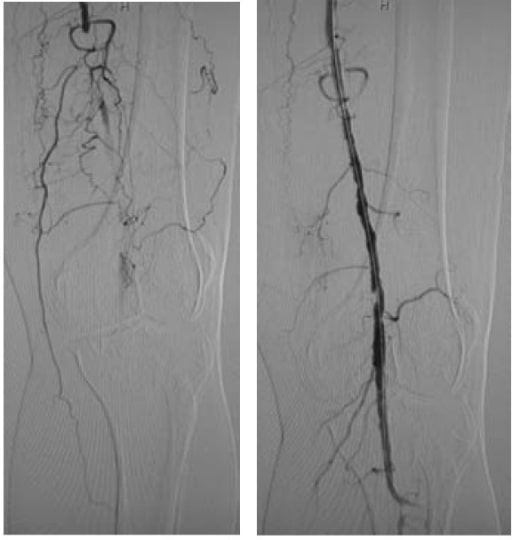Playlist
Show Playlist
Hide Playlist
Peripheral Artery Disease: Summary
-
Slides 03 VascularMedicine advanced.pdf
-
Reference List Vascular Medicine.pdf
-
Download Lecture Overview
00:00 So peripheral artery disease whether it is in the carotids or in the legs is the result of narrowing of the arteries by the atherosclerotic process, the same factors that lead to narrowing of the coronary arteries cause atherosclerosis to develop in the peripheral arteries. Indeed when I see a patient who has coronary disease, I know they also have atherosclerosis in their legs and in their carotid arteries, and in their aorta, their abdominal aorta. There is a whole variety of other complications that can occur just because somebody has a heart attack does not mean that is the only area that is being affected by atherosclerosis. 00:42 It is a systemic disease that occurs in all of the arteries and generally causes trouble in one or multiple arterial beds. The commonest site for peripheral vascular disease is the legs and that symptom is of course intermittent claudication when the patient walks and does not get enough blood flow in their muscles. And of course treatment consists of reducing atherosclerotic risk factors such as smoking, better control of diabetes and hypertension, regular exercise, a variety of medicines to lower cholesterol, control of blood pressure and sometimes to thin the blood, and at times when things are quite severe surgery or angioplasty with a little metal stent to open the artery using a catheter technique can be done. There is a lot of good treatments both medical and interventional, surgical, and angioplasty for these patients and that is a very simple reason why because this is the commonest major disease that we see in developed countries throughout the world.
About the Lecture
The lecture Peripheral Artery Disease: Summary by Joseph Alpert, MD is from the course Arterial Diseases.
Included Quiz Questions
What is the most common site of peripheral artery disease?
- Lower extremities
- Fingers
- Abdomen
- Earlobes
- Neck
Customer reviews
5,0 of 5 stars
| 5 Stars |
|
5 |
| 4 Stars |
|
0 |
| 3 Stars |
|
0 |
| 2 Stars |
|
0 |
| 1 Star |
|
0 |




